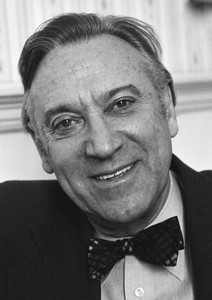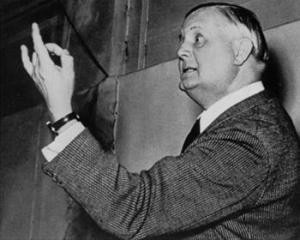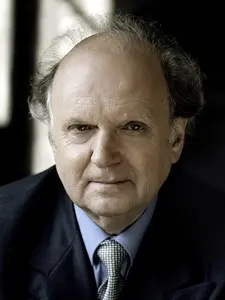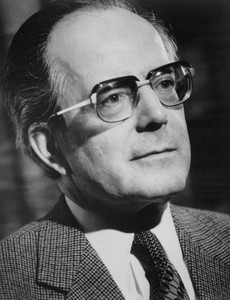
Kirill Petrovich Kondrashin (Kirill Kondrashin) |
Kirill Kondrashin

People’s Artist of the USSR (1972). The musical atmosphere surrounded the future artist since childhood. His parents were musicians and played in various orchestras. (It is curious that Kondrashin’s mother, A. Tanina, was the first woman to compete in the Bolshoi Theater Orchestra in 1918.) At first he played the piano (music school, V. V. Stasov technical school), but by the age of seventeen he decided to become a conductor and entered the Moscow Conservatory. Five years later, he graduated from the Conservatory course in the class of B. Khaikin. Even earlier, the growth of his musical horizons was greatly facilitated by classes in harmony, polyphony and the analysis of forms with N. Zhilyaev.
The first independent steps of the young artist are connected with the Musical Theater named after V.I. Nemirovich-Danchenko. At first he played percussion instruments in the orchestra, and in 1934 he made his debut as a conductor – under his direction was the operetta “Corneville Bells” by Plunket, and a little later “Cio-Cio-san” by Puccini.
Soon after graduating from the conservatory, Kondrashin was invited to the Leningrad Maly Opera Theater (1937), which was then headed by his teacher, B. Khaikin. Here the formation of the creative image of the conductor continued. He successfully coped with complex tasks. After the first independent work in A. Pashchenko’s opera “Pompadours”, he was entrusted with many performances of the classical and modern repertoire: “The Wedding of Figaro”, “Boris Godunov”, “The Bartered Bride”, “Tosca”, “Girl from the West”, “Quiet Don “.
In 1938 Kondrashin took part in the First All-Union Conducting Competition. He was awarded a diploma of the second degree. This was an undoubted success for the twenty-four-year-old artist, given that the winners of the competition were already fully formed musicians.
In 1943 Kondrashin entered the Bolshoi Theater of the USSR. The theatrical repertoire of the conductor is expanding even more. Starting here with “The Snow Maiden” by Rimsky-Korsakov, he then puts on “The Bartered Bride” by Smetana, “Pebble” by Monyushko, “The Force of the Enemy” by Serov, “Bela” by An. Alexandrova. However, already at that time, Kondrashin began to gravitate more and more towards symphonic conducting. He leads the Moscow Youth Symphony Orchestra, which in 1949 won the Grand Prix at the Budapest Festival.
Since 1956, Kondrashin has devoted himself entirely to concert activity. Then he did not have his permanent orchestra. In the annual tour of the country, he has to perform with different groups; with some he collaborates regularly. Thanks to his hard work, for example, orchestras such as Gorky, Novosibirsk, Voronezh have significantly improved their professional level. The one and a half month work of Kondrashin with the Pyongyang Orchestra in the DPRK also brought excellent results.
Already at that time, outstanding Soviet instrumentalists willingly performed in an ensemble with Kondrashin as a conductor. In particular, D. Oistrakh gave him the cycle “Development of the Violin Concerto”, and E. Gilels played all five of Beethoven’s concertos. Kondrashin also accompanied at the final round of the First International Tchaikovsky Competition (1958). Soon his “duet” with the winner of the piano competition Van Cliburn was heard in the USA and England. So Kondrashin became the first Soviet conductor to perform in the United States. Since then, he had to repeatedly perform on concert stages around the world.
The new and most important stage of Kondrashin’s artistic activity began in 1960, when he led the Moscow Philharmonic Symphony Orchestra. In a short time, he managed to bring this team to the forefront of artistic frontiers. This applies to both performance qualities and repertoire range. Often speaking with classical programs, Kondrashin focused his attention on contemporary music. He “discovered” D. Shostakovich’s Fourth Symphony, written back in the thirties. After that, the composer entrusted him with the first performances of the Thirteenth Symphony and The Execution of Stepan Razin. In the 60s, Kondrashin presented the audience with the works of G. Sviridov, M. Weinberg, R. Shchedrin, B. Tchaikovsky and other Soviet authors.
“We must pay tribute to Kondrashin’s courage and perseverance, principles, musical instinct and taste,” writes critic M. Sokolsky. “He acted as an advanced, broad-minded and deeply feeling Soviet artist, as a passionate propagandist of Soviet creativity. And in this creative, bold artistic experiment of his, he received the support of the orchestra, which bears the name of the Moscow Philharmonic… Here, in the Philharmonic Orchestra, in recent years, Kondrashin’s great talent has been especially brightly and widely revealed. I would like to call this talent offensive. Impulsiveness, impetuous emotionality, addiction to sharpened dramatic explosions and climaxes, to intense expressiveness, which were inherent in the young Kondrashin, have remained the most characteristic features of Kondrashin’s art today. Only today the time has come for him to a great, genuine maturity.
References: R. Glaser. Kirill Kondrashin. “SM”, 1963, No. 5. Razhnikov V., “K. Kondrashin talks about music and life”, M., 1989.
L. Grigoriev, J. Platek, 1969





